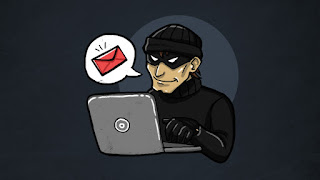PhotoScape
Creating
and Manipulating Images Using PhotoScape
There
are plenty of image manipulation tools but if you are going to create
a website, you have to use the one which is efficient. PhotoScape is
a good tool because it is feasible for beginners and advanced users
alike.
On PhotoScape’s main screen, you will see the many features it has
that you can use for creating web content as follows:
Viewer - as the name implies, is a picture viewer with features the same with most image viewers like changing image orientation.
Editor - alters the appearance of a single image
Batch Editor - alters the appearance of multiple images
Page - arranges several photos to create a single one; similar to a mosaic
Combine - links several images together to form a bigger image
Animated GIF - allows you to create an animated GIF from several pictures
Print - readies picture for printing
Splitter - divides a single photo into multiple parts
Screen Capture - captures the screen and saves it
Color Picker - grabs a pixel from your screen to be used in editing
Raw Converter - converts RAW images (uncompressed images usually from digital camera) to JPEG
Rename - allows you to rename a batch of photos
Paper Print - useful tool for printing your own calendars, sheets, lined paper, graph paper, etc.
For
this lesson, we will only focus on the ones that we can use for our
future website project: the Editor and Batch Edit
Editor
Edit
- Open PhotoScape then choose editor.
- Choose the folder where the image you want to manipulate is located using the file explorer on the upper left.
- Once you have selected the folder, you will see a preview of all images found on that folder at the bottom of the file explorer.
- From the preview, select the image you want to use. The image now be shown on a much bigger preview inside your work area similar to what is shown below.
- Notice the properties of the image like the file name, the image size (in pixels), and the file size found on the bottom of the preview.
Home
Tab – this is where you can add a frame, resize, sharpen, and add
filters and effects to your image
Objects
Tab – this is where you can place a wide variety images like
texts, shapes, and symbols
Crop
– this is where the various tools can be found in order to
properly crop an image to desirable size
Tools
– includes other tools like red eye correction, mole removal,
mosaic effect, and brush tools. For more information about the tool,
simply click it and a tip will be displayed describing how to use
it.
7. Click
SAVE
located
on the lower right of the program. The SAVE
AS dialog
box
will
appear. Save it in your activities folder with the file name
editorexer.jpg.
Check
the file size and see how much space you save.
Batch Edit
Batch
editing is one of the most useful tools when trying to easily
manipulate all image at the same time. This is most useful when you
create a gallery of photos for a website. You can make their sizes
uniform to what you have specified. For this exercise, you will need
to take at least ten pictures and save in your desired folder. It is
highly recommended that your photos share the same orientation
(portrait or landscape)
- Select the folder where your photos are located, then on the Preview window, drag the photos you want to be part of the batch edit to the work area (center).
- Use the tool on the right to edit your photo. This is similar to the options in edit except the Crop and Tools tab which are replays by the Filters tab. The Filters tab is used to add a certain filter that will apply to all your photos.
- Resize the pictures so that they do not exceed 800 pixels in width. Add filters if you want.
- Click on Convert All button found on the upper right.
- The Save dialog box will appear that will allow you to change the location, the name of the images, and the file type. Since we are working on photographs, we are going to keep it as JPEG. For this exercise, save the batch images in a new folder labeled as “batch” inside your resource folder.































